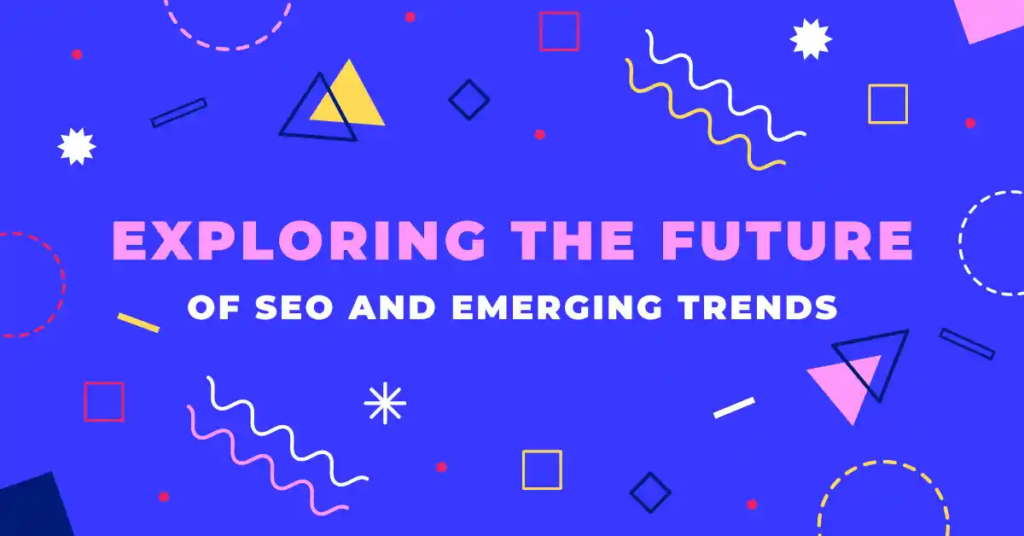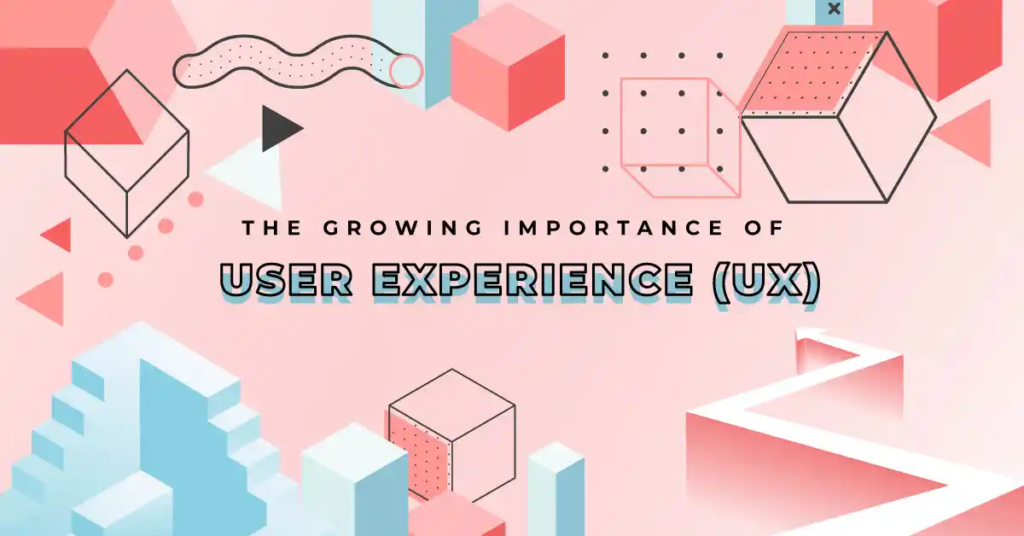
Keeping pace with SEO and search engine marketing trends is crucial for businesses aiming to maintain a competitive edge. Crafting long-form content, like comprehensive blog posts, effectively covers intricate topics and enhances search engine rankings. The future of SEO promises rapid advancements in both practices and technologies. Digital marketers must comprehend emerging trends to remain ahead in the game. These key trends will not only shape strategies but also influence search engine rankings, providing businesses that swiftly adapt with a significant advantage.
By understanding these shifts, businesses can ensure their digital marketing efforts are effective and aligned with the latest developments in visual search alone. As Google frequently updates its algorithms, staying informed is vital to maintain visibility and leverage competitive advantages. In this ever-evolving landscape, businesses that embrace future trends and adapt quickly will thrive in search engine results pages, ultimately reinforcing their online presence and success.
The Evolution of Search Engines Algorithms

Understanding the evolution of search engine algorithms is crucial for effective search engine marketing.
Understanding Google Search Algorithm Updates
Google frequently updates its search algorithm to enhance search quality, which significantly impacts search engine marketing and SEO strategies. Recent updates to the Google Search Algorithm have made it imperative for marketers to stay informed. These algorithm changes can alter search rankings overnight, necessitating quick adaptation by businesses to maintain visibility. As a result, understanding these updates is crucial for developing effective SEO strategies that align with Google’s evolving priorities.
Understanding Algorithm Updates and Their Impact
Algorithm updates influence search engine marketing and search engine optimization strategies by modifying ranking factors. Google places a strong emphasis on user experience and content quality, which means SEO efforts must focus on optimizing websites to meet these criteria. Tools like Google Keyword Planner, Semrush, and Keyword Magic Tool provide valuable insights into relevant keywords, helping businesses adapt their strategies. Demonstrating credibility within a niche significantly affects visibility on the search engine results page, making it an essential component of a successful SEO strategy.
Adapting to changes in the search algorithm requires flexibility and a proactive approach. SEO involves continuously monitoring performance and adjusting tactics to stay ahead. Tools like Download Rank Tracker help track keyword positions, and the effectiveness of these adjustments is reflected in Google Search results. Continuous learning and staying informed about algorithm updates ensure successful adaptation and sustained visibility.
Maintaining Competitive Edge with SEO Strategies
Overall, the dynamic nature of Google’s search algorithm underscores the importance of staying updated with the latest developments in search engine marketing and SEO. By understanding and adapting to these changes, businesses can maintain their competitive edge and continue to thrive in search engine results pages. Embracing a flexible SEO strategy that prioritizes user experience and content quality will ultimately lead to improved search rankings and online success.
The Role of AI in Search Algorithms
AI's Influence on Search Algorithms
Search engine marketing and artificial intelligence play a crucial role in modern search algorithms, with Google utilizing AI to enhance search accuracy. Machine learning aids in understanding user intent, revolutionizing the development of SEO strategies. The AI-driven features within Google’s search significantly impact content ranking and display, emphasizing the necessity for high-quality, user-centric content.
Machine learning has a profound effect on SEO by analyzing vast data sets, which Google uses to refine search results. Leveraging machine learning for predictive analysis is an integral aspect of SEO, with tools like Semrush providing AI-integrated insights. This technological advancement increases the precision of keyword research, making it more effective.
AI-Driven Predictive Search and Content Alignment
Search engine marketing, particularly through predictive search capabilities powered by AI, improves user experience by anticipating user queries and offering AI-driven suggestions. SEO strategies are increasingly focused on aligning content with these predicted searches. Tools such as the Keyword Magic Tool assist in identifying emerging trends, while Download Rank Tracker monitors shifts in search behavior to ensure that content remains relevant and effective.
Overall, the integration of AI and machine learning in search algorithms marks a transformative period for SEO. Businesses must adapt to these advancements to maintain their competitive edge. By focusing on user-centric content and predictive capabilities, companies can enhance their SEO strategies, ensuring sustained visibility and success in search engine results pages.
Voice Search Optimization

Voice search optimization is a crucial aspect of search engine marketing.
Rise of Voice-Activated Devices
Impact of Voice-Activated Devices on SEO
Voice-activated devices, like smart speakers and virtual assistants, have become household staples, significantly impacting SEO strategies and search engine marketing. Users now rely on voice commands for convenience, necessitating a reevaluation of keyword strategies. With the rise of natural language queries, long-tail keywords have gained importance, prompting marketers to focus on conversational phrases. Utilizing keyword tools becomes essential for identifying these phrases that align with user queries.
Voice search enhances user experience by providing quick and accurate responses, meeting user needs efficiently. Websites must load quickly and be optimized for mobile devices to meet these expectations. Prioritizing user-friendly interfaces is crucial for ensuring easy navigation and swift access to information.
Crafting Content for Voice Search
Adapting content for voice search involves using natural and engaging language that captures users’ attention, a crucial aspect of search engine marketing. Information should be concise and relevant, mimicking human conversation to engage users effectively. A questions and answers format works well, aligning with the conversational nature of voice searches and resonating with users seeking relatable narratives.
Structured data and schema markup are vital for aiding voice search. By organizing information effectively, search engines can better understand content, enhancing visibility in voice search results. Proper implementation boosts rankings, ensuring competitiveness in an SEO landscape increasingly influenced by voice-activated technology.
Adapting Content for Voice Search
Conversational Content and Structured Data
Adapting content for voice search involves using natural and engaging language that captures users’ attention. Information should be concise and relevant, reflecting human conversation to effectively engage users. A questions and answers format aligns well with the conversational nature of voice searches, appealing to users with relatable language and narratives.
Creating conversational content is key to engaging users effectively. Utilizing a questions and answers format mirrors human conversation, capturing attention and keeping users engaged. Structured data and schema markup are crucial for enhancing voice search capabilities. By organizing information effectively, search engines can better comprehend the content, increasing visibility in voice search results.
Incorporating search engine marketing strategies can further enhance your content’s reach and effectiveness.
Enhancing Visibility with Natural Language
Incorporating structured data boosts rankings, ensuring competitiveness in a search engine marketing and SEO landscape increasingly influenced by voice-activated technology. Proper implementation of these elements enhances visibility and search rankings. In conclusion, adapting content for voice search requires a focus on natural language and user engagement. By crafting conversational content and utilizing structured data, businesses can improve their visibility in voice search results, remaining competitive in an evolving SEO landscape driven by voice-activated technology.
Mobile-First Indexing

Search engine marketing has become increasingly important with the rise of mobile-first indexing.
Importance of Mobile Optimization
Search engine marketing is of paramount importance in SEO as search engines prioritize mobile-friendly websites. Users today expect seamless experiences on their mobile devices, making it imperative for businesses to ensure responsive design for all users. Responsive design adapts to various screen sizes, ensuring that websites maintain readability on smartphones and tablets. Designers utilize flexible grids and layouts, allowing images and text to adjust automatically, which enhances user satisfaction through consistency across devices.
Enhancing User Experience through Design and Speed
Search engine marketing and page speed are critical factors that impact user engagement. Slow-loading pages can frustrate users, so developers must focus on minimizing file sizes and employing image compression to reduce load times. Efficient coding practices are essential for improving performance, as faster pages lead to better search rankings. The importance of mobile optimization extends beyond design and speed; it also influences search rankings and drives organic traffic.
Mobile usability significantly affects search rankings, with search engines assessing mobile compatibility. Websites that offer poor mobile experiences tend to rank lower, while user-friendly interfaces boost visibility. Usability factors include touch-friendly navigation, easily clickable buttons, and legible text without the need for zooming. Clear calls to action guide users, and intuitive design encourages interaction, all of which contribute to enhanced user experience.
Monitoring and Improving Mobile Performance
Finally, monitoring mobile performance is crucial for maintaining optimal functionality in search engine marketing. Tools that track mobile performance provide valuable analytics, revealing user behavior on mobile devices. Regular assessments help identify areas for improvement, and adjustments can enhance the overall user experience metrics. Continuous monitoring ensures that websites remain functional and competitive in the ever-evolving landscape of mobile technology.
Impact on Search Rankings
Mobile Usability and Search Rankings
Search engine marketing significantly influences search rankings and drives organic traffic, as search engines prioritize mobile compatibility. Websites that provide poor mobile experiences tend to rank lower, while those with user-friendly interfaces enjoy enhanced visibility. To ensure optimal performance, businesses must focus on several key usability factors.
These include touch-friendly navigation, easily clickable buttons, and text that remains legible without the need for zooming. Clear calls to action guide users effectively, and an intuitive design encourages interaction, all contributing to a seamless user experience.
Monitoring and Analytics for Mobile Performance
Monitoring mobile performance is crucial for maintaining optimal functionality in search engine marketing. By using monitoring tools that track mobile performance, businesses can gain valuable insights into user behavior on mobile devices. Regular assessments help identify areas for improvement, allowing for timely adjustments that enhance the overall experience. Continuous monitoring ensures that websites remain functional and competitive in the ever-evolving landscape of mobile technology.
Analytics play a pivotal role in revealing user behavior on mobile devices. By understanding how users interact with their mobile sites, businesses can make informed decisions about necessary improvements. Adjustments based on these insights not only enhance user satisfaction but also contribute to better search rankings.
Overall, a focus on mobile usability is essential for maintaining strong search rankings and driving organic traffic. By prioritizing user-friendly design elements and continuously monitoring performance, businesses can ensure their websites offer a superior mobile experience. This approach not only improves visibility on search engines but also fosters user engagement and satisfaction.
The Growing Importance of User Experience (UX)

In today’s digital landscape, search engine marketing and user experience (UX) are becoming increasingly important for businesses looking to improve their online presence.
The Growing Importance of User Experience (UX)
User experience (UX) holds a pivotal role in shaping modern SEO strategies and search engine marketing, as search engines prioritize websites with quality content that deliver seamless interactions for users. AEO, or Answer Engine Optimization, emphasizes providing precise answers to user queries, which is crucial for businesses aiming to enhance user experience and improve search rankings. By focusing on user-centric design and content, businesses can ensure their websites meet the evolving expectations of both users and search engines.
Core Web Vitals and Their Impact on SEO
Core Web Vitals are essential metrics that measure key aspects of web page performance, which Google uses to assess user experience in search engine marketing. In addition to these metrics, E-E-A-T, which stands for Experience, Expertise, Authoritativeness, and Trustworthiness, plays a critical role in determining website ranking. Google’s algorithm prioritizes content that demonstrates these qualities, making them integral to successful SEO strategies. By incorporating Core Web Vitals into AEO strategies, businesses can optimize their websites for better performance and visibility.
Core Web Vitals consist of three primary metrics: Largest Contentful Paint (LCP), First Input Delay (FID), and Cumulative Layout Shift (CLS). LCP measures loading performance, FID assesses interactivity, and CLS evaluates visual stability. Meeting these benchmarks is crucial for achieving better AEO outcomes, as they directly impact how users perceive and interact with a website. By focusing on these areas, businesses can ensure a smoother user experience, which in turn enhances search rankings.
Improving page experience involves optimizing these Core Web Vitals to enhance user satisfaction. Developers can achieve faster loading times by reducing server response times and employing efficient coding practices to minimize delays. Ensuring stable layouts that prevent unexpected shifts is also essential. By focusing on these aspects, businesses can significantly improve page experience, leading to better AEO results and higher search rankings.
Enhancing Site Navigation
Simplifying User Experience
Site navigation plays a critical role in influencing user engagement by guiding users effortlessly through intuitive design principles, which are integral to effective search engine marketing. These principles emphasize simplicity and clarity, with clear menus directing users to their desired content. Consistent layout elements foster familiarity, while recognizable icons and labels enhance user interaction. A logical organization of content further improves the overall user experience, making it easier for visitors to navigate the site seamlessly.
Reducing bounce rates is essential for maintaining user interest and improving search rankings. Engaging content combined with easy navigation encourages users to stay longer on well-structured websites. AEO strategies focus on providing relevant information and ensuring quick access to desired pages, which helps retain visitor interest and contributes to lower bounce rates.
Streamlined Navigation for SEO Success
Streamlined navigation structures benefit AEO by creating a user-friendly environment that enhances the overall experience. By focusing on simplicity and logical organization, businesses can ensure that users find the information they need quickly and efficiently. This approach not only improves user satisfaction but also positively impacts search rankings by demonstrating a commitment to quality user experience.
Ultimately, enhancing site navigation is a key component of modern SEO strategies and search engine marketing. By implementing intuitive design principles and focusing on reducing bounce rates, businesses can create a more engaging and user-friendly online presence, leading to higher search rankings and better visibility.
Video Content and SEO

Incorporating video content into your search engine marketing strategy can significantly boost your SEO efforts.
The Rise of Video in Search Queries and Results
Search engine marketing has led to the rise of video content in search engine results pages, as search engines prioritize video due to its higher engagement levels compared to other content types. To improve visibility, businesses must focus on optimizing their video content. This involves creating high-quality videos that attract viewers with clear audio and visuals, enhancing the user experience. Incorporating relevant keywords in titles and descriptions is essential for improving searchability, while eye-catching thumbnails can significantly increase click-through rates.
Optimizing Video Content for SEO
YouTube serves as a powerful platform for enhancing search engine marketing and SEO efforts, offering businesses the opportunity to reach a vast audience. By maintaining consistent posting schedules, businesses can keep viewer interest alive, while engaging content encourages subscriptions and shares. Collaborations with influencers can further expand reach and credibility, making YouTube an essential tool in a comprehensive SEO strategy.
Optimizing video content involves several strategies that ensure better visibility and engagement. High-quality production values, such as clear audio and visuals, are crucial for attracting and retaining viewers. Additionally, using relevant keywords in video titles and descriptions enhances searchability, while eye-catching thumbnails can boost click-through rates, making videos more appealing to potential viewers.
Leveraging YouTube for Enhanced SEO
Leveraging YouTube effectively requires businesses to adopt a strategic approach to search engine marketing. Consistent posting schedules help maintain viewer interest, while engaging content can drive subscriptions and shares. Collaborating with influencers can also expand a business’s reach and credibility, making YouTube an integral part of any successful SEO strategy.
Video SEO Best Practices
Search engine marketing requires adherence to best practices to ensure better rankings, as search engines favor well-structured video content.
Enhancing Accessibility and Metadata
Transcripts and captions play a significant role in enhancing video accessibility and are a key component of search engine marketing. By indexing transcripts, search engines improve discoverability, while captions cater to viewers with hearing impairments. Accurate captions not only boost engagement but also increase retention, providing additional keyword opportunities.
Metadata optimization is crucial in video SEO. Titles should incorporate primary keywords, while descriptions need to be informative and concise to improve searchability. Tags help categorize content, increasing the likelihood of appearing in relevant searches. Accurate metadata plays a pivotal role in ensuring that videos reach their intended audience.
Boosting Engagement with High-Quality Content
Incorporating these elements into video SEO strategies and search engine marketing enhances visibility and engagement. High-quality production values, such as clear audio and visuals, are essential for attracting viewers. Furthermore, using eye-catching thumbnails can significantly increase click-through rates, making videos more appealing to potential viewers.
Overall, by focusing on these best practices, businesses can optimize their video content for better search engine rankings. This approach not only improves visibility in the traditional search engines’ results but also enhances user engagement, ultimately contributing to a successful SEO strategy.
Local SEO and Hyperlocal Targeting

Search engine marketing is crucial for businesses looking to improve their local SEO and hyperlocal targeting. By focusing on these strategies, companies can better reach their target audience and enhance their online presence.
Importance of Local Search
Businesses must focus on local search to attract nearby customers, utilizing search engine marketing and Google Search Console keyword data to uncover relevant topics for content creation. Google plays a crucial role in local search results, as users trust search engines to find local businesses. Optimizing Google Business Profiles helps businesses appear in local searches, and author entities enhance the visibility of local establishments. By claiming and verifying their profiles, businesses can ensure accurate information that attracts more users. Additionally, incorporating photos and encouraging reviews can significantly improve user engagement, while Google Lens image results can further enhance local visibility.
Optimizing Google Business Profiles
Search engine marketing is a powerful strategy for strengthening local SEO. Businesses should actively connect with local organizations and seek partnerships with local influencers to increase their reach. Establishing credibility within the community through author entities can also be beneficial. Off-page SEO strategies, such as building local backlinks, play a vital role in improving local rankings and establishing a strong online presence.
Creating Hyperlocal Content
To effectively target keywords to specific neighborhoods, businesses should integrate search engine marketing strategies by creating hyperlocal content that resonates with local communities. Engaging with local events and news can foster a sense of community connection. Utilizing localized keyword research helps identify relevant terms that align with shifting user search intent, while understanding how Google SGE impacts local information discovery is crucial. By focusing on neighborhood-specific content, businesses can better engage their local audience and enhance their local SEO performance.
Overall, businesses must prioritize local search efforts to enhance their visibility and attract nearby customers. By optimizing their Google Business Profiles, engaging in local link building, and creating hyperlocal content, businesses can effectively connect with their local communities. This comprehensive approach not only improves local search rankings but also fosters a sense of trust and engagement with the target audience, ultimately driving success in the local search engine land.
Hyperlocal Content Creation
Search engine marketing involves creating hyperlocal content designed to target specific neighborhoods, encouraging businesses to create content tailored to local communities. This approach involves conducting localized keyword research to identify relevant terms that resonate with the area. Shifting user search intent plays a crucial role in shaping content strategies, while Google SGE influences how users discover local information.
Engaging Local Communities
Focusing on neighborhood-specific content is essential for businesses aiming to engage their communities through search engine marketing. By highlighting local events and news, businesses can foster a sense of connection with their audience. Google Lens rankings can be leveraged to showcase local attractions, and author entities can establish authority in local topics. Users appreciate content that reflects their area, enhancing engagement and trust.
Optimizing with Localized Keywords
Search engine marketing is a powerful tool for enhancing SEO performance. By identifying keywords that are relevant to their specific area, businesses can optimize their content strategy. Google SERP features influence keyword strategy, and using a site audit tool can help track the effectiveness of these keywords. Extensions to improve SEO assist in refining keyword choices, ensuring content remains relevant and effective.
In summary, hyperlocal content creation is a strategic approach that emphasizes the importance of connecting with local communities. By focusing on neighborhood-specific content and conducting thorough localized keyword research, businesses can effectively engage their audience and enhance their local SEO performance.
The Role of Social Media in SEO

Social Signals and Search Rankings
Social media significantly influences search rankings through social signals, enhancing visibility for businesses with a strong social presence. To capitalize on this, businesses should focus on developing a robust social profile by maintaining consistent activity across platforms. Engaging content that encourages interactions and shares is key to attracting attention and boosting visibility.
Building a Strong Social Presence
Building a strong social presence requires active engagement, with businesses regularly updating their profiles with fresh content. Visual elements such as images and videos are particularly effective in capturing interest. Local businesses can benefit from showcasing their community involvement, as a well-maintained profile builds trust and authority among users.
Driving Engagement and Community Connection
Engaging content is crucial for driving social sharing, as creative posts can spark conversations and extend reach. Content marketing strategies should incorporate interactive elements like polls and quizzes to effectively engage audiences. Additionally, highlighting local events and stories can resonate with nearby users, further enhancing engagement and fostering a sense of community connection.
Integrating Social Media with SEO
Integrating social media with SEO strengthens online presence through consistent cross-platform strategies. By aligning content across various channels, businesses can maximize exposure and reinforce brand identity. This approach ensures that messaging remains consistent, enhancing the overall impact of marketing efforts.
Tailoring Content for Each Platform
Tailoring content for each platform is crucial, as unique formats suit different channels. For instance, short videos perform well on Instagram and TikTok, while in-depth articles are better suited for LinkedIn. Local businesses can benefit by highlighting regional achievements across these platforms, which helps in building a strong community connection and enhances credibility.
Measuring Social Media Impact on SEO
Measuring the impact of social media on SEO involves tracking various metrics to gain insights into engagement levels. Analytics tools provide valuable data on likes, shares, and comments, offering a clear picture of audience interaction. Monitoring local mentions and tags can indicate community interest, allowing businesses to make data-driven adjustments that enhance overall SEO performance.
By focusing on these strategies, businesses can effectively integrate social media with their SEO efforts, leading to improved visibility and user engagement. This comprehensive approach not only strengthens online presence but also fosters a sense of trust and authority, ultimately contributing to long-term success in the digital landscape.
The Future of Link Building

Quality Over Quantity
Search engines highly value authoritative backlinks, which originate from reputable websites and significantly enhance search rankings. To earn these high-quality backlinks, businesses must focus on creating valuable and relevant content that naturally attracts them. This emphasis on using high quality content over quantity ensures that the backlinks contribute positively to a website’s credibility and visibility.
In contrast, black hat techniques can severely harm SEO efforts. Methods such as buying links or using link farms are penalized by search engines, leading to diminished rankings and visibility. To achieve long-term success, businesses should avoid shortcuts in link building and adhere to ethical practices. By focusing on genuine and authoritative backlinks, businesses can ensure sustainable growth and a strong online presence.
Innovative Link Building Strategies
Content partnerships present new opportunities for link building by allowing businesses to collaborate with industry leaders. Through joint content creation, these partnerships attract diverse audiences, enhancing credibility and expanding reach. Such collaborative efforts result in mutual benefits, strengthening the online presence of all parties involved.
Influencer marketing significantly boosts link-building efforts as influencers bring with them dedicated followers whose endorsements can increase brand visibility. It is crucial for businesses to choose influencers wisely to ensure authentic partnerships, which in turn create valuable backlinks. By leveraging the influence and reach of these partnerships, businesses can effectively enhance their SEO strategies.
Artificial Intelligence and SEO

AI-Powered SEO Tools
AI-powered tools streamline SEO tasks efficiently, making it easier for businesses to manage their online presence. Automation simplifies repetitive tasks, allowing AI tools to handle keyword research and site audits. This efficiency enables marketers to focus on strategic planning while ensuring consistent performance and timely updates. By automating these processes, businesses can maintain a robust online presence with minimal manual intervention.
Additionally, AI enhances data analysis by providing deep insights into user behavior and search trends. These tools analyze vast amounts of data, offering businesses valuable information to refine their strategies. With AI-driven analysis, companies can craft SEO approaches that align with user intent, ultimately improving their search rankings and user engagement. This data-driven approach empowers businesses to make informed decisions, ensuring they stay ahead in the competitive digital landscape.
AI in Content Creation
AI in content creation is shaping the future of SEO, and businesses must be prepared to leverage AI-generated content to engage audiences effectively. By analyzing search patterns, AI generates SEO-friendly content that is both relevant and engaging. This not only improves search rankings but also boosts user engagement, providing businesses with content that truly resonates with their target audiences. As AI continues to evolve, its role in content creation will become increasingly vital, helping businesses stay competitive in the ever-changing digital landscape.
Moreover, AI enhances user experiences by personalizing content to cater to individual preferences. These tools understand user behaviors and deliver customized interactions, significantly increasing user satisfaction and retention. By offering unique experiences tailored to user needs, businesses gain a competitive edge, fostering a deeper connection with their audience. As personalization becomes a cornerstone of digital marketing strategies, leveraging AI to deliver these customized experiences will be crucial for businesses aiming to maintain a strong presence in search engine results pages.
Predictive SEO and Data Analytics

Leveraging Big Data for SEO
Businesses leverage big data to gain insights into user behavior, which provides a deeper understanding of how users interact with websites. By analyzing patterns, marketers can refine their SEO strategies, ensuring content remains relevant and engaging. This data-driven approach not only enhances user engagement but also leads to higher rankings on search engine results pages (SERPs).
Furthermore, big data plays a pivotal role in forecasting future SEO trends. By examining historical data, analysts can identify patterns that help predict shifts in search engine algorithms. This foresight allows businesses to proactively adjust their search data and strategies, ensuring they stay ahead of the curve and maintain a competitive edge in the ever-evolving landscape of SERPs.
Implementing Predictive SEO Strategies
Anticipating search intent is at the heart of predictive SEO. By analyzing search queries, marketers can gain a deeper understanding of user needs, allowing them to create content that aligns with anticipated questions and topics. This strategic alignment helps search engines understand and not only enhances visibility and relevance in search results but also improves user satisfaction and engagement. The ability to accurately predict what users are looking for ensures that content remains pertinent and engaging, ultimately boosting SEO performance.
Adapting to market changes is crucial for maintaining a strong presence on search engine results pages. Businesses must closely monitor industry trends and competitor actions, using data-driven insights to guide strategic adjustments. This flexibility allows them to maintain strong SERP positions despite dynamic market conditions. Continuous adaptation is key to sustained success, ensuring that businesses can navigate the ever-changing landscape and remain competitive.
First-hand Experience in SEO

Learning from SEO Experts
SEO experts provide invaluable insights through their extensive first-hand experience, offering a wealth of knowledge accumulated over years of practice. Their expertise is instrumental in helping businesses navigate the complexities of search engine optimization. By sharing detailed case studies, these professionals highlight successful strategies and real-world applications, allowing businesses to learn and improve their own tactics. Success stories further demonstrate the impact of effective SEO practices, inspiring others to adopt similar approaches and achieve remarkable results.
In addition to case studies, experts offer practical tips that enhance SEO efforts, drawing from their hands-on experience in the field. Businesses benefit from these tried-and-tested methods, as even simple adjustments can lead to significant improvements. Expert advice serves as a roadmap for success, guiding businesses in optimizing their strategies. By leveraging the insights provided by SEO professionals, businesses can make informed decisions that drive growth and visibility in the competitive digital landscape.
Adapting to the SEO Curve
Adapting to changes in SEO demands constant vigilance, as the digital landscape is in a state of perpetual evolution. Staying informed is essential for ensuring continued success in this dynamic environment. By keeping a close eye on industry trends, businesses can anticipate shifts in search algorithms and adjust their strategies accordingly. This proactive approach helps maintain strong search rankings, with first-hand experience offering valuable insights into predicting future developments, ultimately keeping businesses competitive.
Staying ahead of changes involves more than just monitoring trends; it requires a commitment to continuous learning and improvement. In the ever-evolving field of SEO, ongoing education and adaptation are crucial. Businesses must be open to embracing new techniques and technologies, as these innovations can lead to significant enhancements in their SEO efforts. By prioritizing learning and improvement, companies can achieve sustained growth and enhanced visibility in search engine results pages.
The value of adapting to SEO trends cannot be overstated. With Google’s frequent algorithm updates, businesses must be prepared to respond swiftly to maintain their visibility. Continuous learning and experience in SEO are vital for navigating these changes successfully. Furthermore, user experience remains a top priority, and tools like Google Analytics play a crucial role in monitoring performance and ensuring that strategies align with user satisfaction.
Ultimately, staying ahead in SEO offers significant competitive advantages. Businesses that embrace future trends and focus on user satisfaction are more likely to thrive on search engine results pages. Google rewards sites that prioritize these factors, and effective strategies can have a profound impact on search results. By continuously adapting and refining their approaches, businesses can secure their place in the competitive digital landscape.
Compelling Calls to Action (CTAs)
Compelling calls to action (CTAs) are a crucial element in enhancing user engagement and driving conversions. A well-designed CTA can guide users toward desired actions, such as subscribing, downloading resources, or making purchases. The strategic placement of clear and compelling CTAs underscores the importance of guiding users effectively, contributing to a seamless user experience.
Designing Effective CTAs for Engagement
Designing effective CTAs for engagement involves several key considerations. Firstly, CTAs should be clear, concise, and prominent, making it easy for users to understand the desired action. Secondly, CTAs should be visually appealing, using contrasting colors and fonts to draw attention. Thirdly, CTAs should be contextual, aligning with the surrounding content and user intent. Finally, CTAs should be actionable, using verbs like “Sign up” or “Get started” to encourage users to take action.
By focusing on these elements, businesses can create CTAs that not only capture attention but also drive meaningful interactions, ultimately enhancing user engagement and contributing to higher conversion rates.
AI’s Impact on Link Building
AI is revolutionizing the link building landscape, offering new opportunities for businesses to establish high-quality backlinks. AI tools can analyze vast datasets to identify authoritative websites and relevant content for building quality backlinks. Machine learning algorithms can assess backlink quality, detect spam, and monitor credibility, empowering businesses to establish a robust and trustworthy online presence. By leveraging AI in link building, businesses can streamline their efforts, increase efficiency, and improve their online visibility.
AI tools like Semrush and Ahrefs are particularly effective in identifying potential backlink opportunities and analyzing the quality of existing backlinks. These tools use advanced algorithms to evaluate the relevance and authority of websites, ensuring that businesses focus on acquiring links that will positively impact their search engine rankings. Additionally, AI can help detect and disavow harmful backlinks, protecting websites from potential penalties.
Overall, the integration of AI in link building represents a significant advancement in SEO strategies. By utilizing AI tools, businesses can enhance their link building efforts, ensuring they remain competitive in the ever-evolving digital landscape.
Personalization and User Experience
Personalization and user experience are becoming increasingly intertwined in the world of SEO. As search engines prioritize user-centric content, businesses must focus on delivering personalized experiences that cater to individual user preferences. AI-driven personalization is set to reshape the SEO domain by tailoring search experiences and content delivery to individual user preferences. By incorporating personalization into their SEO strategies, businesses can enhance user engagement, improve conversion rates, and establish a competitive edge in the digital landscape.
AI tools like Google Analytics and Adobe Experience Cloud provide deep insights into user behavior, enabling businesses to create personalized content that resonates with their audience. These tools analyze user data to identify patterns and preferences, allowing businesses to deliver customized experiences that meet individual needs. Personalized content not only improves user engagement but also increases the likelihood of conversions, as users are more likely to interact with content that feels relevant to them.
In conclusion, personalization is a powerful tool in modern SEO strategies. By leveraging AI-driven insights and focusing on user-centric content, businesses can create meaningful connections with their audience, ultimately enhancing user engagement and driving success in search engine rankings.
Content and Keywords
Content and keywords are foundational elements of a robust SEO strategy, influencing how a digital presence is perceived.
Topical Authority
Demonstrating expertise on a specific topic, known as topical authority, is becoming increasingly important. Topical authority means becoming your niche’s go-to source for information by creating content that comprehensively covers your subject matter. Focus on developing high-quality, expert-level content to build an extensive catalog of content that explores related topics and subtopics. Implement a site architecture that makes it easy for humans and search engines to find relevant content across your website.
To build topical authority, businesses should focus on creating in-depth articles, guides, and resources that cover all aspects of their niche. This comprehensive approach not only establishes credibility but also helps search engines recognize the website as an authoritative source. Additionally, organizing content into clear categories and using internal linking strategies can enhance site architecture, making it easier for users and search engines to navigate the site.
By prioritizing topical authority, businesses can improve their search engine rankings and establish themselves as leaders in their industry. This approach not only enhances visibility but also builds trust with users, ultimately driving long-term success in the digital landscape.




